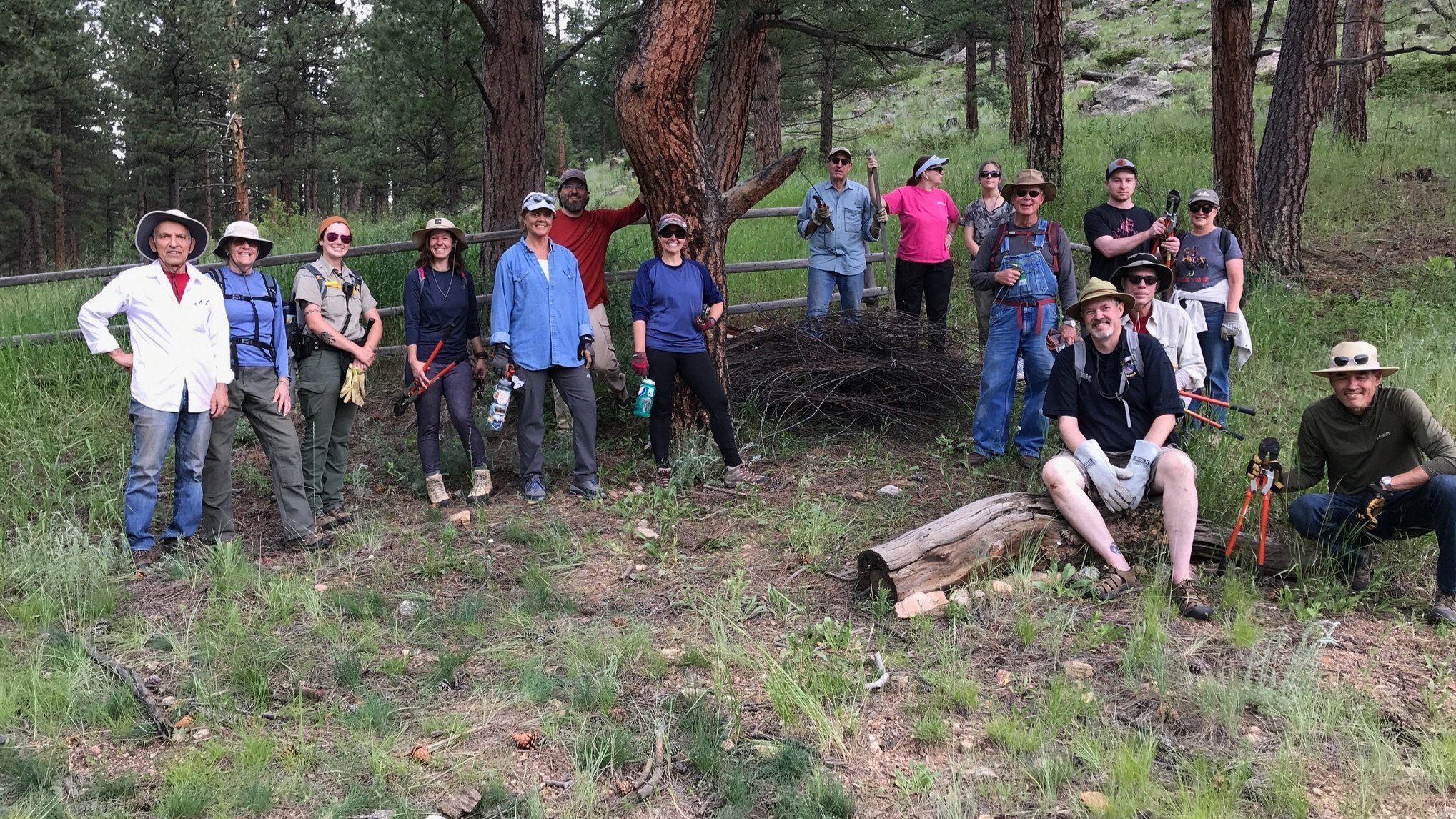
Barbed Wire Warriors
Starting off the 2025 Season
A special barbed wire cutting ceremony recognizing the opening of the 2025 barbed wire removal season was held Sat. May 3rd at the Elk Meadow Park in Evergreen. The team removed all of the barbed wire fencing along Elk Meadow Open Space nest to Hwy 74.
Thanks to our very own Barbed Wire Warriors as well as, Jeffco Open Space Volunteers, Colorado Department of Transportation.
If you would like to help in future barbed wire removals you can sign-up to join our team here.
Thank you to CBS4 Denver for capturing this event. Click the image to watch the video.State Issues First-ever Special Use Permit to Remove Barbed Wire
Colorado issued it’s first-ever special use permit to a nonprofit to remove barbed wire om state highway right-of way.
The goal is to remove six miles of barbed wire by July 2025. All of the wire is being properly recycled.
If you would like to volunteer for our help in our barbed wire removals you can sign-up to join our team here.
Thank you to 9 News Denver for capturing this event. Click the image to watch the video.Coloradans Just Tore Down a Bunch of Barbed Wire Fencing to Help Wild game
The Colorado Department of Transportation issued its first-ever permit to tear down old fencing for the sake of wildlife along a major highway. The removal project took place in Evergreen on May 3, 2025.
Read about it at Outdoor Life.
CDOT Permit Allows Group to Remove Barbed Wire Threatening Elk Near Evergreen
Saturday May 5, 2025 Our very own Barbed Wire Warriors obtained the first-ever permit from the Colorado Department of Transportation to remove barbed wire fencing in a right of way.
Read about it at Denver KDVR.
Clearing a Safer Path For All
Barbed Wire Fence Removal:
Join a Wild Aware Barbed Wire Removal Crew to help with public parks and open spaces and be a part of our new private property removal project.
On average, one ungulate (hooved animals like our deer, elk, moose & antelope) is found tangled or dead in every 2.5 miles of fencing, 90% being fawns (Harrington and Conover, 2006).
Barbed Wire Everywhere!
There is estimated to be 620,000 miles of fencing crisscrossing the Western United States. Drive around Evergreen & you’ll see fences that are intact still serving a function but you will also see fencing that is no longer maintained, down, and without purpose. The presence of fencing, barbed and other types, can pose challenges and act as barriers for migrating wildlife. Animals can be injured or killed when they collide with or get tangled in the barbed wire & other types of fencing.
Barbed Wire Fences and the Growing Movement to Taking them down for wildlife
Read or listen to this great article about our very own Barber Wire Warriors in action by Rachel Cohen, the Mountain West News Bureau reporter for KUNC Here.
How is Wild Aware Helping?
Wild Aware is making an effort to physically remove existing fencing that is no longer in use. We are also trying to increase awareness of wildlife-friendly fencing options, share ways to modify existing fencing to reduce injury and fatalities, and encourage reflection on the need for fencing in today’s environment. The removal of abandoned and unnecessary barbed wire in our local area is a Wild Aware program that is rapidly gaining momentum. Starting in 2022, Wild Aware has partnered with Denver Mountain Parks for a series of barbed wire removal events open to the public. Volunteers have shared 453 hours of their time, not including our admin hours, working 22 projects, & so far have removed 11.9 linear miles of wire. While “good fences make good neighbors,” we should strive to be good to our wildlife neighbors as well. Let’s do what we can to reduce the human impact on wildlife migration and movement.
Journalist & author, Ben Goldfarb, visited Wild Aware in Feb. 2024, to learn about the Barbed Wire Warrior program.WHAT CAN YOU DO?
Do you really need a fence? Consider the purpose of your fencing needs before installation.
If yes, then choose a wildlife friendly option. Ideal wildlife fencing:
● Is highly visible to ungulates and birds
● Allows wildlife to jump over and crawl under
● Provides wildlife access to important habitats and corridors
● Design
● Smooth wire or rounded rail for the top
● Height of top rail should be 42” or less (especially on steep slopes)
● At least 12” between top two wires
●At least 16” between bottom wire and ground
● Highly visible
●Source: Colorado Parks and Wildlife
Dangerous fences for wildlife:
● Are too high to jump over
●Are too low to crawl under
● Have loose wires
● Are difficult for animals to see
● Create a complete barrier
Barbed Wire Fencing on your property?
We can help you create safe passage for wildlife, pets and people.
If you meet our criteria, Wild Aware can help you create safer passage for wildlife, people and pets right in your own yard:
You must live in unincorporated Jefferson County, CO
Park or Clear Creek Counties are approved on a case-by-case basis
The barbed wire or other wildlife-unfriendly fencing which you would like to be removed must be on your property. It will be your responsibility to confirm that the fence is not the property of a neighbor, the county in which you reside or a section of the Colorado Department of Transportation’s Right of Way.
Your participation in the project is essential, whether it is participating in the fence removal work or providing financial support, or both.
You will be required to sign a liability waiver.











